
Efficient resource allocation is one of the biggest driving forces behind successful businesses. Any modern organization is going to heavily depend on its many departments working together in unison.
The 3 pillars holding everything together are project management, open communication, and strategic management.
Project managers have the needed skill sets, techniques and philosophies to shape work cultures and optimize how resources are being used. The more you’re getting out of those resources, the higher your profits.
All of that must be helped by top-management decisions though. Your SOPs and company policies must be built around a culture of collaboration. Basically, that’s how you improve operational efficiency.
In order to get a company from stagnation to innovation, you have to break it down first. Think of the many elements that make the overarching “picture” what it is.
That means your financial resources, your human resources, IT infrastructure, production capabilities, natural resources, etc. You aren’t doing as well as you’d want right now because you’re not maximizing the output of each of your teams.
Conceptually, it really doesn’t matter if we’re talking of a marketing department, or of a construction technique for a building. The idea is the same when your goal is to increase operational efficiency.
It’s all about functional vs. cross-functional resource allocation. For example, your sales team could be swimming in leads and constantly closing deals. It is functional.
However, if your new clients only stay with you a short while after receiving the promised services, there’s a problem. And, if you’re sure that your services are high-quality, it can only mean one thing. The sales team and the service team aren’t cross-functional.
Operational efficiency means that the entire process must be up to par, from A to Z. Thankfully, there’s an automated way to help you achieve that. The Atlassian software stack is a collection of project management, issue tracking, and collaborative tools that we can help you adopt.
From purchase to implementation, our specialists are on the job. Get in touch with us, and let’s scale your organization together.
Table of Contents
- What is Operational Efficiency?
- Operational Efficiency Basics
- Optimizing Work With Atlassian
- Busy Work is Not Efficiency
- See The Big Picture & Break It Down
- 13 Steps to Increase Operational Efficiency
- Focus On Your Employees
- Understand The Real Operational Challenges
- Assign Bearable Workloads
- Provide Relevant Information
- Standardize Communication
- Monitor Turnover Rates
- Improve Task Allocation
- Offer Training & Growth Benefits
- Nurture Your Clients
- Make Use of Technology
- Be Willing to Change
- Don’t Overstretch Finances
- Set The Right KPIs
- Redefine Teamwork in Your Business
What is Operational Efficiency?

Revenue shouldn’t actually be your foremost KPI. Even if your company is making money, could it perhaps make it easier, better, faster? In the ever-evolving “game” of delivering products and services to consumers, what will actually create operational efficiency is clever management.
Always put your customers or clients at the center, but remember what surrounds the center (your employees). The better you can promote a physically and psychologically healthy workplace, the better outputs you’ll get out of your most critical resource: staff.
We get it; you want to reduce costs. Here’s the thing, everyone wants to reduce costs.
Improving operational efficiency means knowing where to draw the line; what’s worth cutting out, what’s worth keeping, and what you should invest more into.
Creating and executing a solid operational efficiency strategy will be an iterative process. You can’t implement just 2 – 3 measures and then wait for a magical result. The entire board of executives (CMO, CTO, COO, CEO, CFO) has to get involved into scaling optimally.
Only by working together with your directors (as a business owner and/or chairperson), as a team, will you be able to make better plans.
In time, you’ll see that the financial viability of your projects, investments, business growth, etc is going to improve as a side effect. Because, well, you can’t literally increase “operational efficiency” as if it was a tangible thing.
Instead, it’s an idea made out of a myriad other practices (which we’ll describe in the following sections).
Operational Efficiency Basics
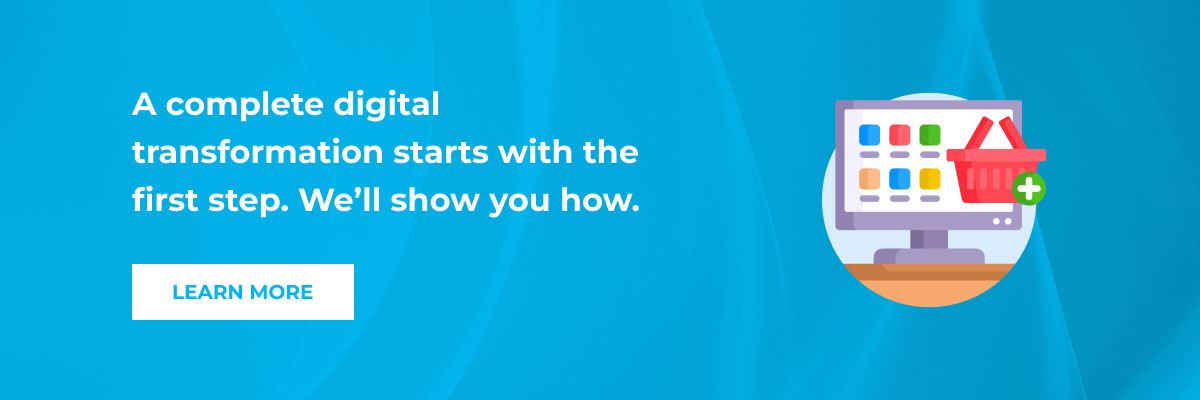
Increasing operational efficiency boils down to being able to provide your end users with quality products or services, while using fewer resources. Or, alternatively, using the same resources much better.
The principle is simple economics. The more outputs you can get from the same amount of inputs, the better. That’s what will determine efficiency. There are 2 big and important factors that dictate this process:
- How well you’re managing your resources.
- How much does it cost to have those resources operational.
The more you understand how to optimize processes and minimize your costs without cutting corners, the higher the efficiency will go. Consequently, your projects will be more profitable.
We’re sure you’re familiar with the comparison between a business and a machine. How each employee and each asset is a “cog” in the wider mechanism. Crude and cynical as the comparison can be, it’s nonetheless accurate.
The better oiled each cog is (as it were), the better it performs in spinning the next one, and the next one, and the next one…
Until, ultimately, you go past looking at operational efficiency at just lowering costs. Instead, you’ll see that efficiency is dictated by how your processes interact with internal and external factors. You need to find the problems within, but also the threats from the outside.
Even if you’re satisfied with how your business operates, competitors could be doing the same thing better. As a result, their price will be better. So, you’ll lose customers.
Remember not to lock yourself in a bubble. Improvement opportunities are everywhere; it’s up to you to find them and take advantage. Don’t hesitate to learn from those who have already succeeded either. Information is power; use it.
And there’s no better way to spread that information in your company than with Atlassian Confluence
Optimizing Work With Atlassian
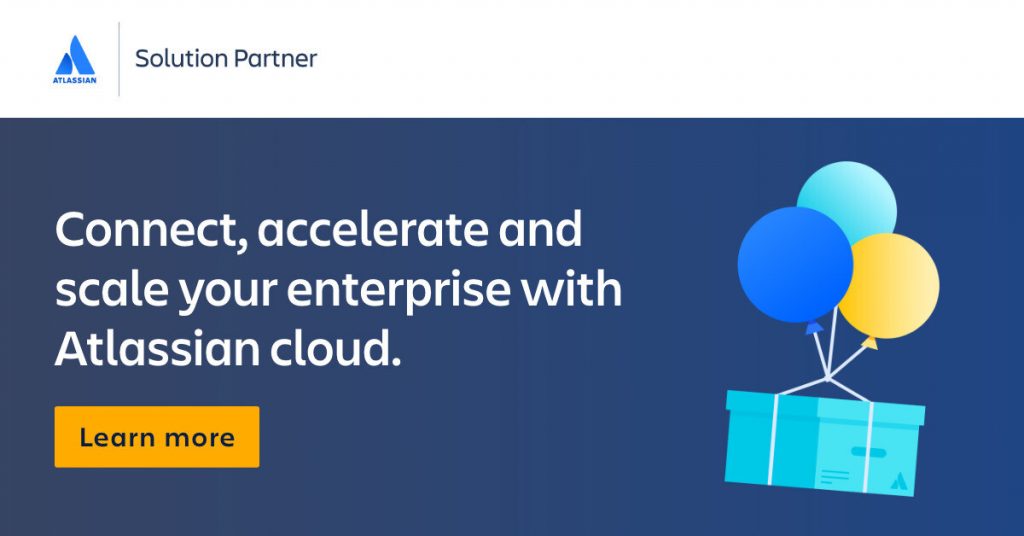
Atlassian has been helping organizations improve operational efficiency since its inception. The tech giant has created numerous software solutions that refine internal processes and simplify how procedures are followed.
Remember that all in all, operational efficiency is just about those 2 practices (processes and procedures). They dictate how employees collaborate with each other, how managers perform their duties, how communication is handled, and how task allocation is coordinated.
Day-to-day operations are essentially established from the top, but then they happen from the bottom up. So, you have to make sure that your SOPs make sense for the people using them.
It doesn’t matter if a workflow makes sense on paper. It has to be effective in actual reality.
Brainstorming should be the first step, sure, but following-up on every idea with another SOP is not going to yield results. Instead, take an iterative approach that’s helped by automation.
If you’re the business owner or the chairperson, come together with your executives and draw up an actionable plan. What are your most urgent pain points right now? That should be your immediate focus, which will be solved with Atlassian’s tools.
Popular Atlassian Software

- Jira Software – An issue tracking system that leverages a visual and UX friendly UI to plan, assign, track, and report on software engineering tasks.
- Jira Service Management – A top-of-the-line ITSM platform built from the ground up to help IT agents easily monitor and resolve issues. It also sports a self-help desk.
- Jira Work Management – Another version of Jira Software, made exclusively for business teams. Stripped of its technical and development-centric features, JWM is perfect for marketers, designers, finance teams, HR, business ops, etc.
- Confluence – A universal knowledge base for storing the entirety of your business’s information. In Confluence, you create “Pages”, which are part of “Spaces”. Each Page is a document (a procedure, an onboarding, client documentation, a report, etc), and its “Space” is a category of which it belongs.
- Bitbucket – A cloud hosting option for the global repository of a software project that’s following a DVCS workflow. Bitbucket allows simple cross-team collaboration, peer review, code pull requests, and simultaneous branched work.
- Opsgenie – An always-on service for your ITSM and software engineering teams. Opsgenie centralizes alerts, notifications, and pings from a multitude of IT services. This makes incident response way easier, and it’s even better when coupled with Jira Service Management.
- Trello – If Jira’s more than your team needs, Trello’s the solution. A simple team collaboration tool, Trello is easy to learn and use. You can create a kanban board for each project, which makes assigning and tracking tasks a breeze. Thanks to features such as @tagging, sorting tasks into columns, and linking tasks together, Trello eliminates the need for meetings and goal alignment sessions.
Whenever you’re ready to increase operational efficiency, reach out to us. As certified Atlassian partners, we can help you throughout the entire process (purchase, implementation, data migration, training, maintenance).
Busy Work is Not Efficiency
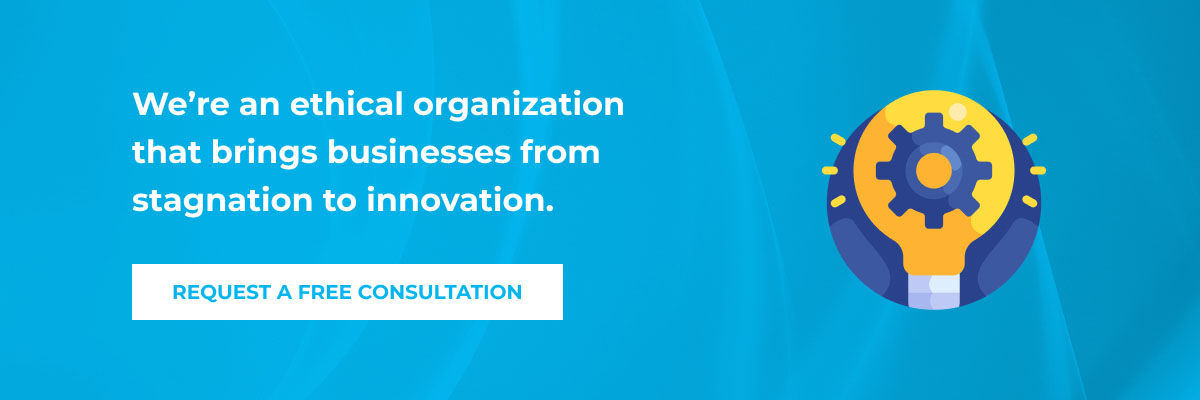
Business administration and project management can often fall prey to the killer of efficiency: busy work. For example, you aren’t actually accomplishing a great communication goal by individually telling 5 colleagues the same thing.
Instead, you could’ve just made an announcement in a common group or channel on Slack. Or, it could’ve been a simple email with everyone CC’ed. Or, even better, you create a Confluence document with all the details, that’s linked to actionable Jira tickets.
What’s more, busy work can manifest because staff just aren’t sure of what they’re supposed to be doing. So, in a misguided effort to look productive, they create “opportunities” for themselves.
Triple-checking tasks, checking in with colleagues about statuses too often, reevaluating well-understood reports, etc. Or, maybe they’re looking over statistical data that has no relevance to the current situation, “discussing” it with colleagues, etc.
Busy work can appear in any setting. The military does it, accounting firms do it, cleaning services do it, etc. Think of cleaning furniture with a dry cloth, only to then clean it again with a damp cloth.
You were just wasting time initially.
Busy work can also mask itself as perfectionism. Some team members will claim that they aren’t satisfied until their job is “just right”. And hey, that’s commendable! Unless it means they’re investing hours and hours into doing those activities.
For example, going back to a Google Slides presentation to change the design of a table over and over again.
You must think of efficiency in clear and profitable terms:
- Tasks mustn’t immobilize teams.
- Business admins shouldn’t see their tasks as unneeded hassle. Check in with them.
- Suffering delays because of human error? Fix them from the root cause.
- What’s 100% needed to successfully deliver your product or service? Focus on those first.
See The Big Picture & Break It Down

Increasing operational efficiency is about thinking both big and small. If you’re taking a hawks’ eye view and the conclusion is that your business is not efficient, start to break down the reasons.
Go into the littlest detail, leave nothing unturned. For example, let’s say you’re not getting enough clients in the sales pipeline. That will be your overarching problem. In order to figure out exactly what’s causing this, go downwards step-by-step.
- When did the issue first start occurring?
- Were there any changes that happened in that period?
- What were those changes, and what did they entail?
- Which team members had a direct effect on the reduction of sales?
- Are they putting in less work?
- If yes, why?
- Is your offer no longer competitive in your market?
- If yes, why?
- Are your employee’s negotiation tactics not up to par?
- Maybe your lists of prospects are no longer good?
- Are sales experts qualifying the wrong people as leads?
- Is the problem in closing warm leads?
So, you see, there’s no 1 right answer. It depends on the specifics of the problem, and the solution will too. However, the process is always the same.
Improving operational efficiency boils down to seeing what your organization is doing right now, and how you could be doing it better. We know, easier said than done. But, that’s why we’re strongly advising you to look to automation tools.
This way, you’ll be able to cut out inefficiencies, wasted time and busy work much faster, regardless of department. Find the parts of the workflows which take the most time, and automate & digitize as many of them as you can.
At the end of the day, your staff will thank you for streamlining their work. And operational efficiency depends on your staff.
13 Steps to Increase Operational Efficiency
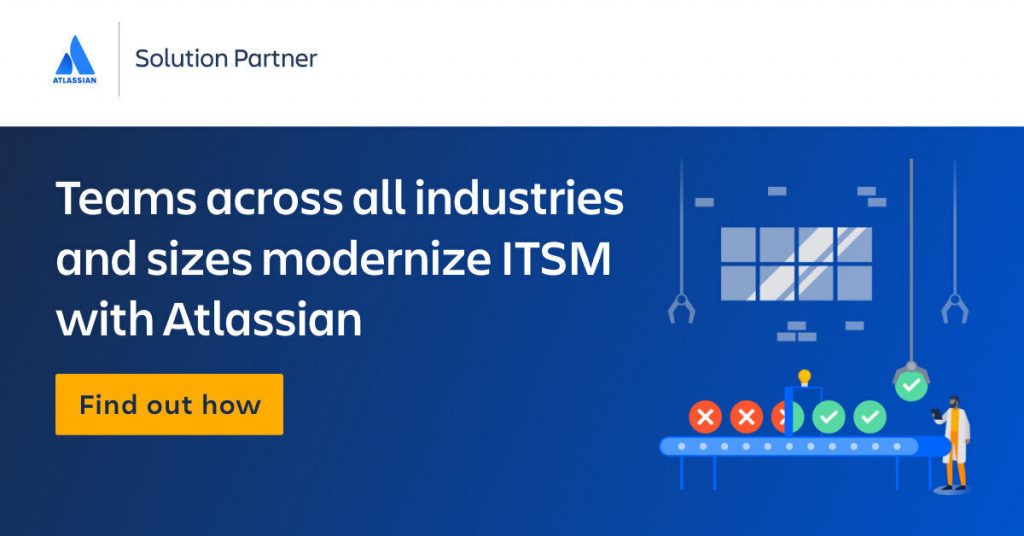
The fast-paced nature of modern day markets has caused significant strain on labor resources; which many managers might be tackling from the wrong angle. The end goal of making operations more efficient is seen as increasing the profit margin.
However, making your workflows better will not directly raise profits. Instead, it will have a positive impact on how you work; how fast & how well your deliverables get to their end users.
Improving operational efficiency means taking a step back from solely a financial view, and looking at the many “branches” of a company. By tackling each underperforming resource gradually and methodically, you’ll build towards your vision of productivity.
1. Focus On Your Employees
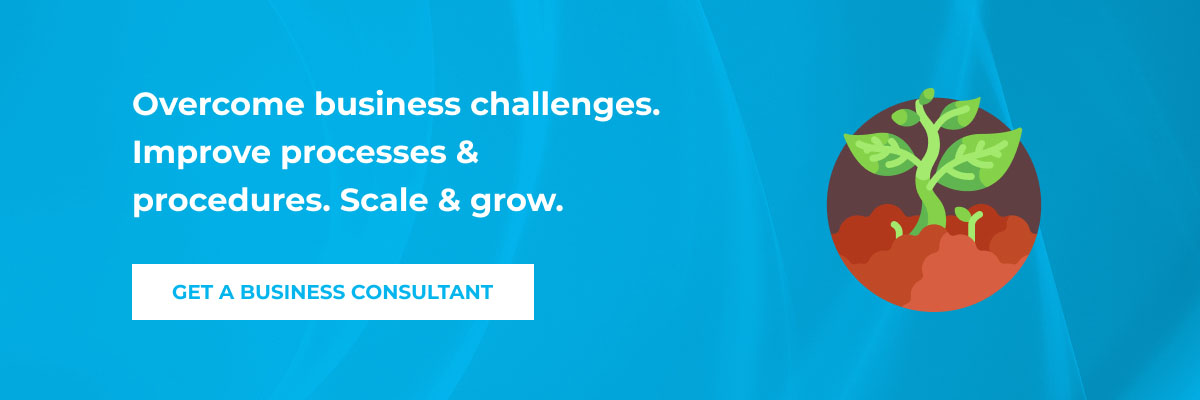
Or contractors, or associates, or whoever’s handling the successful creation, marketing, and delivery of what you’re selling. Managing how they spend their time (and on what) will have the biggest effect on business results.
One of the best strategies is to keep it as transparent as possible. As technology advances, so do job roles. Many times, this also involves multidisciplinary professionals working together in unison:
SEO experts and content writers, programmers and DevOps specialists, copywriters and web designers, etc.
In order to have your operations run smoothly, you must ensure that this cross-team collaboration is supported. Build your organizational culture around it, whether your business is an NGO, an international enterprise, a local SMB, a national corporation, or anything else.
Nothing will ever be done effectively and efficiently without a simple teamwork process. Our suggestion is to build your task allocation and open communication policies around Jira Software or Jira Work Management.
Thanks to its visual workflows (built with kanban and scrum boards), Jira shows staff what they must do at all times. Additionally, each task can have its own deadline, and be part of larger bodies of work (“Epics”).
For example, you could have an Epic card for launching a new product. Its tasks could include design, executive approvals, market research, marketing strategy, sales pitches, etc. Each task has an assigned team member and a reporter.
The reporter (the creator of the task) gets notified each time there’s a change done to the card. For example, it got moved to the “Done” column, or a new comment has been posted.
In this way (and many others), Jira enables team efficiency by reducing back-and-forth and eliminating mandatory top-down management.
2. Understand The Real Operational Challenges
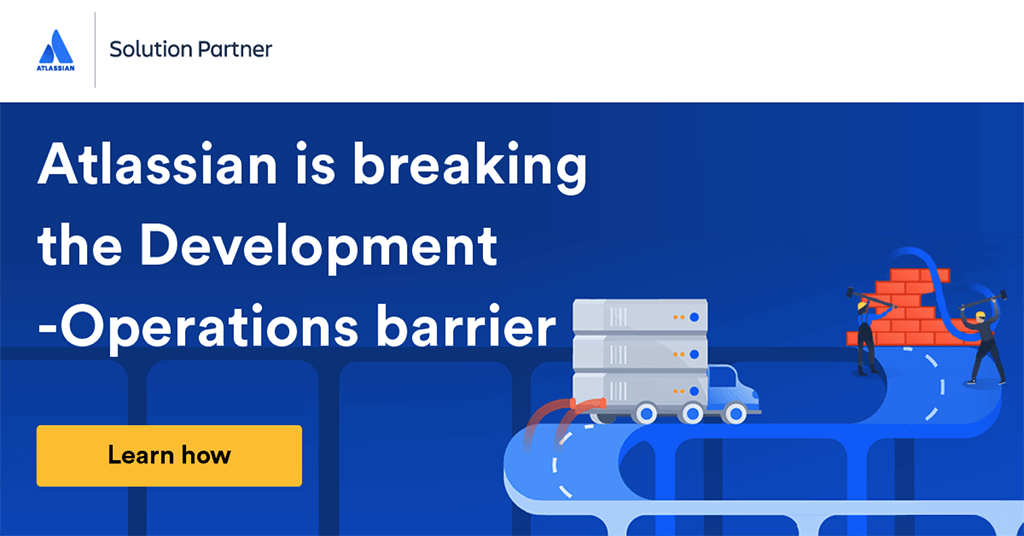
Hierarchy isn’t appreciated by many people in private businesses. And there’s a solid reason for it too. Rigid “chains of command” create a damaging disparity.
For example, from a top management perspective, you might see your staff clocking in hours upon hours, but your profits are going down. That information, on paper, makes no sense. Thing is, you’re not understanding actual reality by looking at that paper.
Say you’re running a goods transport company, and judging by reports, you’re losing money because shipments are late. Now, what does that realistically, tangibly tell you by itself? That, for some reason, your trucks aren’t getting to their destination on time. Nothing else.
If you truly want to fix the situation, it’s time for a boots on the ground attitude. Talk to the warehouse supervisor, ask the drivers if they’re facing difficulties, examine the loading and unloading equipment yourself.
Maybe the trucks are leaving late because the loading process is slow. Or, maybe the tires are causing problems and should’ve been changed a long time ago (but that information never reached you).
Alternatively, it might not even be your company’s fault. Perhaps the delays are happening during unloading, and your drivers just sit and wait for third parties or the recipient.
This same logic could apply if you’re suddenly faced with increased gas expenses. It doesn’t automatically mean that your drivers are stealing gas for themselves.
They could simply be speeding, which increases fuel consumption (and thus decreases economy) because of tire and air resistance.
In other words, don’t jump to conclusions. Talk to your people first.
3. Assign Bearable Workloads
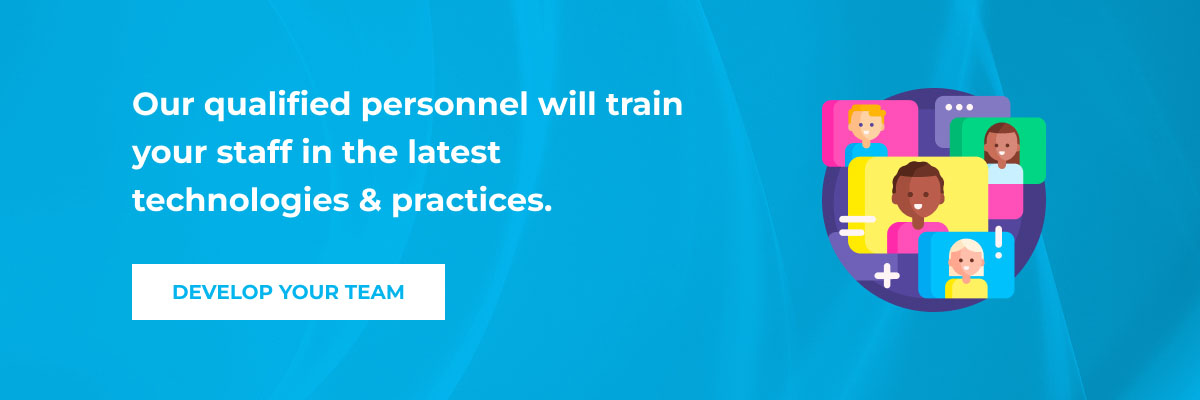
One of the fastest ways to drop productivity is assigning too much work to the same person. So, if you want to increase operational efficiency, you’ll have to make sure that your employees remain healthy.
Depending on your niche, this could mean physical health, mental health, or even both. Furthermore, the risks of overworking your staff are exponentially higher if you’re in a field where hazards are common.
For example, having tired workers handle power tools, dangerous chemicals or operate heavy machinery is a surefire road to work accidents.
Similarly, in an office setting, the outputs of business teams will be drastically affected by fatigue. It can be tempting to have a single employee perform multiple roles. If they;re even good at all of them, great; right? Well, following on what we’ve already said, no. Not great.
Overworking is directly tied to burnout. And medically speaking, chronic fatigue doesn’t just go away. There’s no pill for it either. It’s a long road to recovery and optimal efficiency. If it’ll even happen at all. The concept is exactly the same for overtime.
More hours also does not implicitly mean better results. It just means more work getting done. Whether it’s high quality work or not is another question.
You have to remember that the people getting the work done are…well, people. They get bored, stressed, annoyed, overwhelmed. If they get past a certain point, they’ll stop caring. And if they stop caring, your company’s work efficiency will dip.
There’s just no circumventing it: excessive workloads downgrade quality, and shorter work hours enable efficiency. On the flipside, long hours create sleep problems, bad memory, heart disease, alcohol addiction, diabetes, and so many other illnesses.
You should empower flexibility; reward fast, quality results with time off, bonuses, etc.
4. Provide Relevant Information

Project roadblocks or slow progress are also caused by a lack of important information. There’s no way for operational efficiency to be a thing if teams aren’t sure what they should be doing.
A prime example of this is client communication. It’s ultimately pointless for admin teams to truly understand a client’s wishes, if your operational staff only have a vague understanding. Because, that’s what the client will receive in the end, and your profit margin & reputation will take a hit.
One of the best project management methodologies for fast-paced environments is Agile. Initially created for software development, Agile promotes:
- Adaptability & flexibility.
- Short-term & achievable goals.
- Openness to feedback.
- Iterative improvements.
All of these rely on having simple access to information for all relevant team members. The easiest way to achieve that is with Confluence. There, you can provide all necessary details, links to discovery calls, client onboardings, client KPIs, etc.
Moreover, Confluence keeps all of that knowledge secure & accessible in the cloud. Anyone that has the appropriate permissions can view it from desktop, mobile, tablets, etc at a moment’s notice. Additionally, Confluence also has on-page comments and @tagging.
By enabling this culture of information access, you don’t even need to micromanage your staff. Have an initial call about the new project, point teams to the Confluence Page, and that’s it.
Within, you can directly correlate Jira tasks, Trello boards, or use whatever else native or non-native integration that Atlassian allows (300+ options).
5. Standardize Communication

This is a tricky one. If asked, anyone’s going to say that they want efficient communication at their workplace. However, all of us disrespect the principle from time to time.
The first step is to create a rigorous procedure about how teams are supposed to collaborate. Both as an individual department, and with each other. For example, the procedure can state that all task updates must be given exclusively on Jira.
So, if task updates happen via Slack or M. Teams, the person must be directed to offer it via Jira. If the behavior is repeated time and again though, you might be forced to implement penalizations.
Usually, we advise rewarding desirable behaviors rather than punishing unwanted ones. Still, sometimes it is necessary in order to reinforce the business’s growth potential.
Additionally, each @tag on Jira will also send emails to all the tagged people. So, even if they do not check their Atlassian account that day, it’s unlikely that they won’t look into their inbox. And, presto! Just like that, they know exactly that they’re needed for a specific task.
And here’s another amazing aspect. When they get on that Jira task, thanks to the streamlined communication, all the information, discussions, and previous updates are right there on the card.
Following this same logic, create a template for client/customer communication too. For example, the client should never interact directly with the copywriter, or the developer, or any other operational staff. That’s why you have project managers and/or customer success managers.
Never risk important information sliding under the rug because “it seemed faster at the time”. Communication has to be effective, efficient and adherent to the SOP; first and foremost.
6. Monitor Turnover Rates

A company’s most valuable resource is always the human one. An obvious sign that your business isn’t performing as well as you’ve envisioned is people leaving the company.
While everyone would like a higher salary and more benefits, remember that quitting a job isn’t an easy decision for many people. Stability, familiarity, collegiality and more are all important factors that make someone want to stay at the same organization.
So, a high turnover rate is a big warning sign that your processes are inefficient. No matter how stable a job is, it still has to be at least a moderately enjoyable experience. If employees get sick of their workflows, procedures and internal communication, they’re going to leave eventually.
The reasoning is simple: even basic duties and tasks become annoying to accomplish if the SOP is cumbersome. To improve operational efficiency, you have to keep morale high too.
Frustration is one of the biggest killers of motivation and productivity. Furthermore, a lack of enthusiasm will also be “passed” to your clients or customers. Unmotivated staff will no longer put in the effort. Down the line, this is going to hurt the image of your brand, and lose you revenue.
Additionally, if you keep switching employees, you’ll also have to constantly invest time into onboarding. Instead of having a core in-house team that truly understands your business and your goals, you’ll be stuck in a recruitment loop.
And just like that, you can lose long-term, skilled and loyal employees.
7. Improve Task Allocation
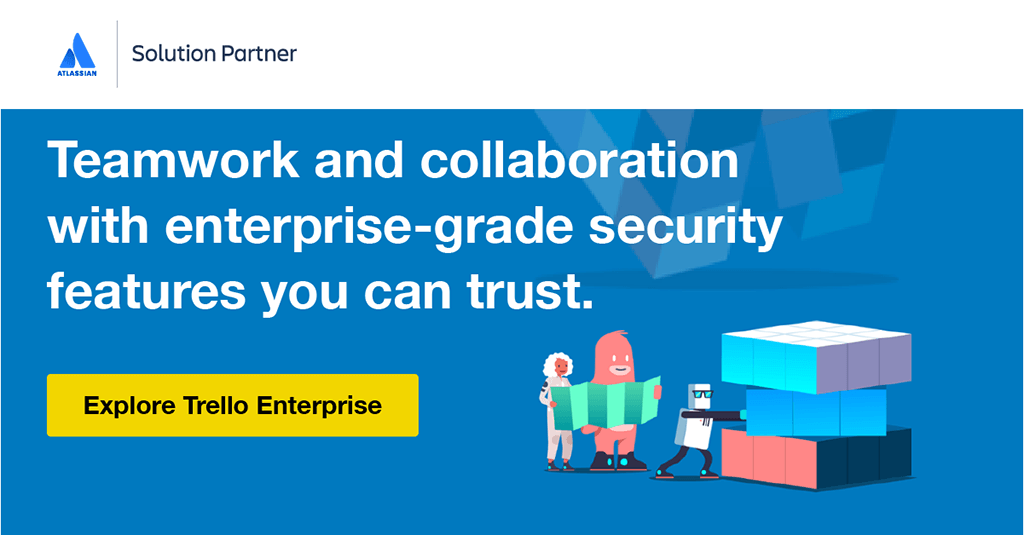
You can’t increase operational efficiency without maximizing the use of your human resource. And just to be clear: this is a two-way street. As a business owner, you want your employees to be highly productive, but as we mentioned on point 3, you mustn’t overwork them.
However, the opposite can also happen. If the right tasks aren’t reaching the right team members, they won’t be done efficiently. It’s a complete disadvantage to treat all of your staff the same way.
Even if 2 people are working on the same role, it doesn’t mean they’ll achieve the same results. For example, take blog content writing. This profession is very versatile in topics. You could write about business advice (like we’re doing now), or about cooking, travel, health, etc.
Essentially, about anything. Now, just because 2 of your employees/contractors are both content writers, it doesn’t mean they’ll excel at the same topics. One of them could be passionate about sales management. In turn, they’ll be better at writing on the topic.
So, it’d be a complete waste to assign the other person (in an ideal scenario). You get the idea.
What’s more, underloads have another direct side effect. If staff literally don’t have enough to do to fill their timetables, they’ll start dragging on their current tasks. What could realistically be done in 3 hours might get estimated for 6. Or, your teams could end up just waiting around for work.
Not only is this a disastrous waste of budget, but it can lead to micromanagement too. And you’ll be hard pressed to find enthusiastic people about micromanagement.
For improved work assignment & trackability, you should use Jira and other Atlassian tools.
8. Offer Training & Growth Benefits

All jobs offer a salary. Sure, your offer could be much better than the competition’s, but it’s not all about money for all of your staff. In the globalized job markets of today, office workers are also looking for opportunities which’ll help them grow as professionals.
If teams don’t have access to training materials and courses, how are they supposed to get better? Best practices change over time, as does technology. New workflows appear, and software gets updates.
With a static team, you’ll never be able to improve operational efficiency. They’ll simply be left behind while competitors advance and adopt new techniques.
Thing is, your people will see this for themselves too. As market demands will change and they won’t know how to achieve them, they’ll start looking for other jobs that can teach them.
Besides, this is equally true regardless of your business field. Welding has changed over time just as backend software development has. When you invest in the growth of your employees, you gain 3 key advantages:
- You’ll know that your teams can deliver on the promise.
- Staff will appreciate that you’re willing to invest in them and trust they’ll stay loyal.
- You’ll have the selling point that you’re up-to-date with emerging techs and methods.
Whenever possible, it’s great to have a dedicated coach. A vetted expert with a proven history of increasing operational efficiency via training teams.
Moreover, we also advise offering cross-functional training. While not directly helpful for an employee’s role, it counts a lot towards their overall understanding of the process. For example, you can teach backend developers why they have to follow SEO indications/why it matters.
This furthers a mutual sense of trust between colleagues, and you never know when that extra knowledge will come in handy.
9. Nurture Your Clients

A true brand looks to involve their clientele in the work process. The reasoning is simple to understand if you think about it like this: when you go grocery shopping, you have clear notions of what you want.
But, when you actually get there, you might realize you also want to purchase XYZ. Or, that the price of what you were after has changed in the meantime. Or, that there are interesting alternatives to the produce you were after.
At a basic level, it’s the same for clients. They have expectations and a vision of how things are going to turn out. Now, it’s extremely important that you pass on those expectations exactly as they are to operational teams.
But, it is equally important to keep clients in the loop too during execution. Get their feedback, ask for approvals, discuss how expectations are reality are matching up.
Do this, and you’ll see their trust in your brand soar. Additionally, your teams will have fewer requests down the line, because the client already knows what’s happening and they won’t be shocked.
Similarly, staff will also be satisfied about not having to redo their work. Regardless of personality, it’s still annoying to be told that your results aren’t satisfying. Even more so if it turns out that they weren’t what was even requested to begin with. So, involve clients in your communication!
As an indirect benefit of this close collaboration, clients might also recommend you to others. And there you go, even more leads coming your way without any sales or marketing efforts on your part.
10. Make Use of Technology
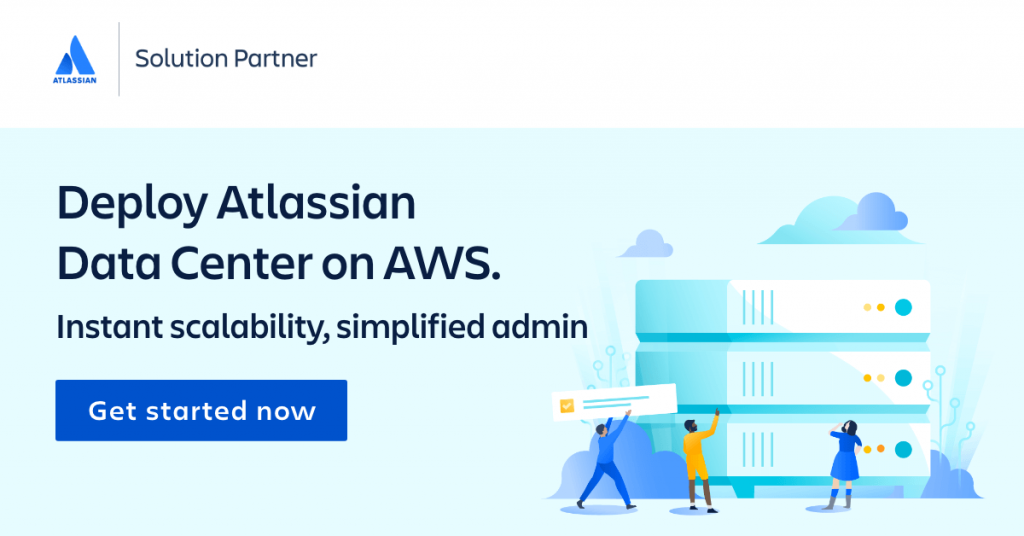
Even if your current (non-digitized) processes and procedures are working, that’s not really a reason to keep them around. Fact of the matter is, digital transformation and automation are a must in any organization that looks to expand.
This stays the same whether your ambitions are national or international. There’s literally no point in manually doing certain things anymore.
For example, Confluence has a ton of ready-to-go templates for a number of SOPs and other types of documents. You just have to “fill in the blanks” as it were with company-centric information. It’s one of the best ways to improve operational efficiency with minimal effort.
Or, take Opsgenie as another example. In the software development & IT worlds, specialists depend on the uptime of many cloud-based services. If the server where you’re hosting your website goes down, so does the website.
Traditionally, ITSM staff had to manually monitor these alerts by keeping a constant eye on their email boxes. But, nowadays, we use so many always-on services, that the tediousness of doing that task is hard to overstate. Besides, it might not even be possible.
Many cloud services will send notifications for a lot of things, not just service interruptions. So, important emails have a good chance of getting lost among others.
ITSM employees could also develop an indifference to emails, since they’re getting so many. If their triage happens to deem an actually important email as not crucial, you have an incident on your hands.
Instead, Opsgenie automatically “gathers” all of these alerts and centralizes them in one place. By defining custom parameters, you decide when the software should ping on-call staff to notify them of an urgent matter. Simple, straightforward, one-time setup.
11. Be Willing To Change
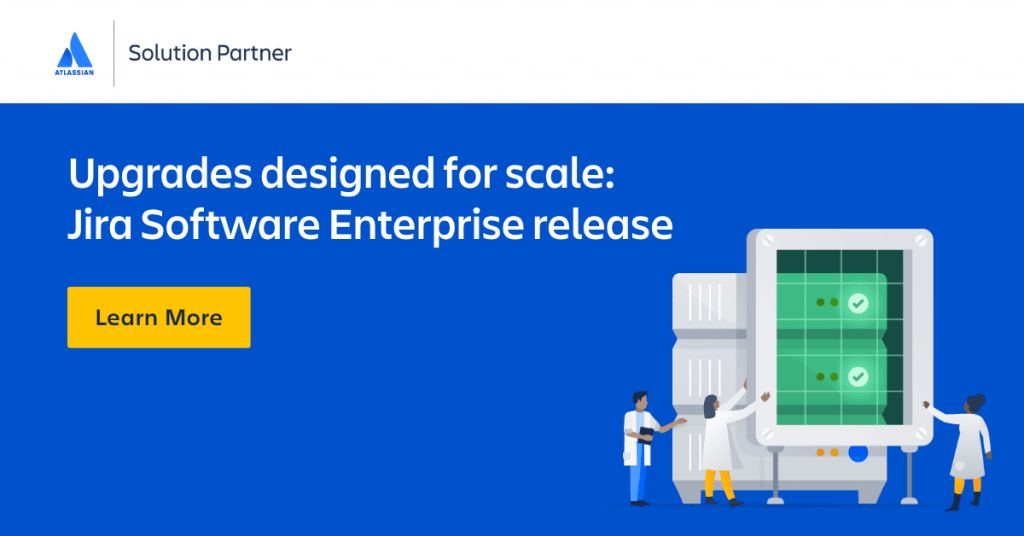
You can try all the “tricks” in the book to increase operational efficiency. If you aren’t genuinely investing in getting better, it’s not going to happen. Making your brand better isn’t a checklist. You can’t just follow the advice in this blog for 1 month and then forget about it.
After you’ve made an improvement, you have to measure and track its progress. Ask for employee and managerial feedback. Accept constructive criticism, even if it’s against your own beliefs. None of us have the ultimate truth in our hands when it comes to business.
Even if your view is irrefutable right now, the truth might change in 3 years, 6 months, or 2 weeks. That’s how fast industries evolve in the modern era.
What’s an advantage today, could be a disadvantage (or inefficient) tomorrow. While your most obvious metrics will be reflected as profit margins, business scaling and new hires, they’re not the only ones.
Employee satisfaction won’t be shown on a graph. Literally go and talk with your people. Hear their complaints and suggestions. If enough are saying it, then implement their feedback. Even if a single person is saying it and it sounds worthwhile, discuss it with other/your executives.
Good ideas don’t exclusively come from the top or the bottom. Gather all those inputs and then filter out the noise. Similarly, learn from your competitors. You don’t have to reinvent the wheel.
12. Don’t Overstretch Finances

As you’re beginning to make higher profits and get better deals, it can be tempting to also risk more. That’s a solid idea if you have a good strategy. It’ll devastate your company otherwise. With competition always being on the rise, you must be careful with how you’re planning the future.
Too much too soon won’t cut it because your infrastructure won’t be ready. Staff will collapse under the workload, and you won’t be able to deliver on your promises.
Too little too late, and you’ll be overtaken by other players in the market.
A safe bet is to invest in short-term projects. Deals that won’t take as much administrative work as your bigger contracts, while still injecting your business with more revenue. Similarly, setting up a strategy and a set of tasks for short-term projects isn’t as demanding either.
Financially, you might not even have to commit at all. If the workloads of existing staff allow it, then you can spread the new tasks among them. Otherwise, you can augment your staff temporarily with outside talent (or work with freelancers).
One thing you shouldn’t be doing though is accepting low margin contracts. Even if the business is financially stable at that point. Sure, it can help spread your name around or leave room for upselling, but it also takes time away from more valuable deals.
There are always exceptions though. For example, if you genuinely believe in the cause of a business, you can choose to work with them for lower margins. It might prove to be a valuable case study, or reinforce your company culture.
Sometimes, you should think of increasing operational efficiency for the real long-term; such as accepting or declining work that’ll resonate well with your employees (and thus affect morale).
13. Set The Right KPIs

KPIs should not be universal. Each function and department has different notions of value. If you resort to tracking performance the same way for everyone, your data will not be accurate. Instead, set key objectives on a team-by-team basis.
These types of individual KPIs are going to help you improve operational efficiency because they acknowledge hard work in a relevant way. For example, a KPI of “get 10 tasks done this month” is meaningless. What’s a task in this context? How big or small is it?
That wording simply wouldn’t take into account the particularities and challenges of each role. For a web design team, it might be a success to have 3 wireframes done in a month. Meanwhile, for an HR team, success could mean 5 new hires.
One great boon of this individual KPI mindset is that it promotes accountability. Teams can’t say that the KPI is unrealistic, because it’s built exactly for their team (in collaboration with the team leader). So, employees have to take responsibility for both their achievements and their failings.
And another thing: it’s likely that departments will find some of their staff are better at fulfilling certain KPIs than others. Long-term, this can lead to people adopting or perfecting at specializations which they resonate with.
Lastly, KPIs are a quick & clean way of setting in-house expectations. They are your business objectives after all, and now they’re everyone’s top-of-list. KPIs help keep work focused on specific and measurable purposes, with contributions being transparent & trackable.
Redefine Teamwork in Your Business

Modern teams need the right tools to help them succeed. Communication, collaboration, cooperation, teamwork; with the correct software, you can automate a lot of parts from these processes.
The Atlassian stack is one of the best options you have available. With over 20 years of experience in the project management and multidisciplinary collaboration markets, Atlassian is a well-established tech giant. Their goal has always been to improve how people work together.
And here’s the best part: you can work directly with us, Wesrom. As certified & trusted Atlassian partners, we can acquire any of their software for you (at a special discount!). After that, we’ll also handle implementation.
Another very helpful feature is that you can migrate all of your data with ease to your new tools. No information gets lost, only structured way more efficiently. There’s a data migration method for even the oldest legacy system out there. So, don’t even worry about it!
Not even sure what the Atlassian stack is? No problem! After implementation and transferring your data, we’ll train you and your staff on how to use the new software.
Our team can also offer long-term IT support, so that you don’t even think about maintenance. Just simple & straightforward teamwork; automated, at your fingertips.
- Jira Software – issue tracking, task allocation, project management, transparency, kanban & scrum.
- Jira Work Management – streamlined version for business teams; no development-oriented features.
- Jira Service Management – complete ITSM package; service desk, issue tracking, task allocation, ticketing system, etc.
- Confluence – universal knowledge base for documentation, SOPs, and other documents.
- Bitbucket – integrated CI/CD for faster programming; simple branching & peer review.
- Opsgenie – automate and centralize alerts & notifications; streamline incident management and ITSM.
- Trello – visually showcase work; organize workflows; increase productivity in small – medium, technical, or non-technical teams.